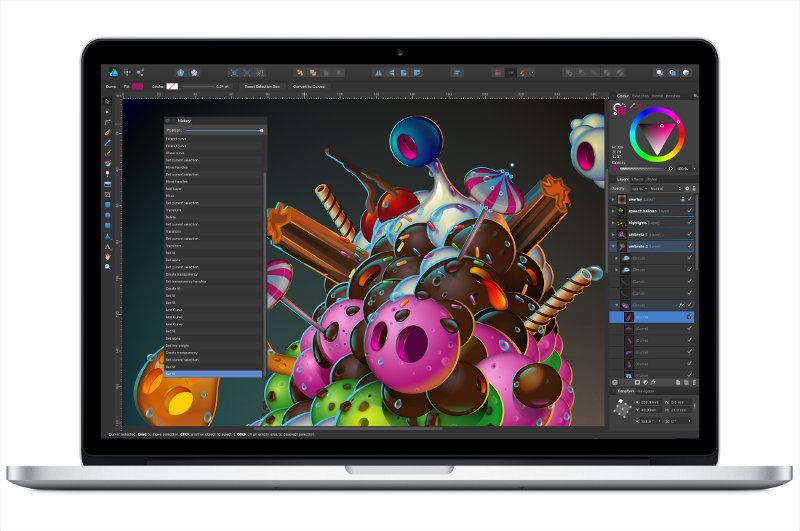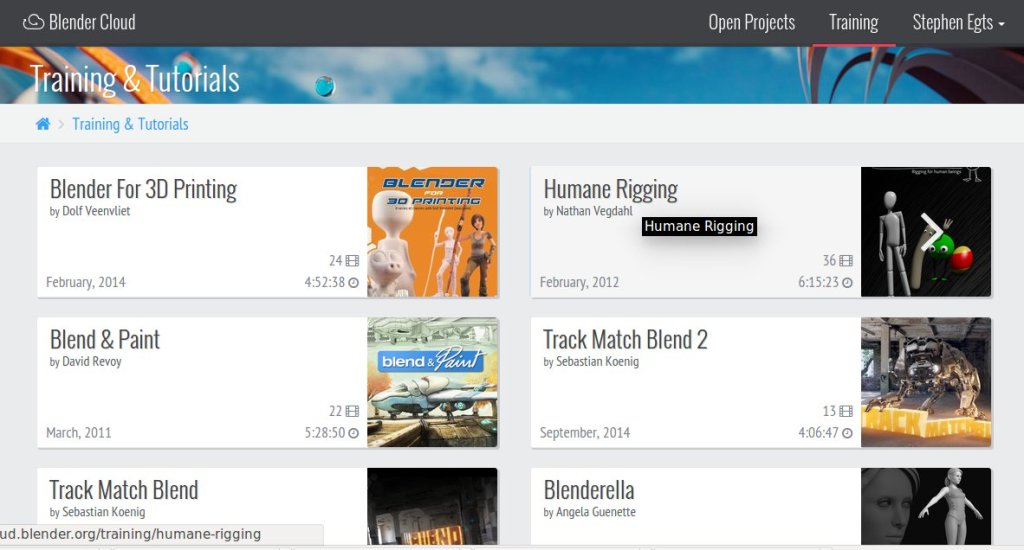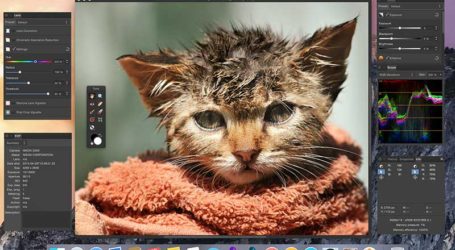Adobe Offsetting: July 2015
For a second month in a row, open source is taking a back seat to proprietary software for my Adobe Offsetting. As a rule I try to support open source as much as possible, but there times when it’s important to stand behind closed software that furthers professional tools.
Serif‘s Affinity Designer and Affinity Photo are two programs that I have been following for months. Serif has been around for decades, making design programs for consumers. Their original line of products has never been considered on the same par as Adobe products. They were always considered lower end than Corel. Over the past five years Serif has been changing gears and specifically focusing on professionals. They even created a sub brand called Affinity in order to differenciate themselves from Serif’s previous products. Their main focus was to create software designed for modern hardware, creating software that is fast, light and nimble while retaining its professional moxy.

Not intended as an Adobe killer
Ash Hewson, Affinity Designer’s Managing Director, told me in a recent interview that Affinity’s main intention has never been an alternative for Adobe dependency. Their goal is to make useful contemporary tools for professionals, becoming another strong tool in a designer’s arsenal of programs. Ash stated that the Affinity line should be measured by its own merits.
Not a hater, but not a supporter
When people read my blog, they get the impression that I dislike Adobe. I don’t. I have a very long history with Adobe. I started learning software back when Adobe first began and I matured with them through the years. Unlike others who pirated Adobe products until they could afford them, I used Corel and Micrografx suites at home. When I bought my first PC computer, Windows was more advanced than working on a Mac. Multithreading was first introduced on a PC, making it easier to actually work. In the 90’s, there was no bundling for Adobe and each program cost from $500-$1,300 USD. As a designer starting out, I couldn’t afford those prices, so I found alternatives. There were also lots of competitors at different price points, including Macromedia.
I didn’t purchase Adobe for freelance and home use until Adobe’s first Creative Suite was introduced. It was the first time that Adobe was an affordable price. Also, Apple matured with OSX, making Adobe and the Mac a great pairing. Making Adobe more affordable meant users like myself stopped searching out and supporting alternatives, so the competition died out.
Competition and different tools were great. It gave us flexibility when creating. It’s like when you hear web designers talk about Fireworks as their preferred software for creating visual design—you use a tool that’s best intended for a certain process instead of finding one singular tool to do everything. We’ve gotten away from that over the years and focused more on trying to create everything with the assistance of just a handful of software.
Like family, I can never hate Adobe. We’ve been together too long. I still use their software at work and keep up on what they’ll be releasing next. What I’m trying to do it change my behavior back to the earlier days and support alternatives like Affinity, cultivating a stable of strong products at my fingertips.
A lot of talk
Designer is an Illustrator equivalent and Photo is comparable to Photoshop. Affinity also has plans for releasing a desktop publishing called Publisher in early 2016. What makes their products noteworthy is the large amount of praise that Affinity is receiving from users, reviews, and even Apple themselves. Last week they just released Affinity Photo, already acquiring over 800 reviews in the Apple store with a 4.9 star average, worldwide. Affinity Designer’s accolades reached an all-time high this May as an Apple Design Award recipient.
Discounts aplenty
This month to celebrate Affinity’s Apple Design Award and the launch of Photo, they marked down their software. Both Designer and Photo can be purchased for $39.99 USD each, that’s 20% off the regular price. Act fast because the sale will be over July 23rd.
While they work on additional features, Affinity also is looking into developing iOS app versions of the software. Affinity originally started from the idea of creating apps for the iPad. It will be interesting to see them branch out to other platform.
As of now, I’ve had limited use of Affinity Photo during their beta. I was really impressed with the UI and overall experience. Masking was especially powerful. I’m looking forward to sharing my feedback for both programs in the coming months.
Additional support
As part of my monthly contribution, I am also a subscribing member of the Blender Cloud with a reoccurring monthly donation. If you are first learning Blender, this site is a wonderful resource of videos for learning modeling and animation techniques. They also have access to all the art and assets from their upcoming open-source animation, Cosmos Laundromat.







